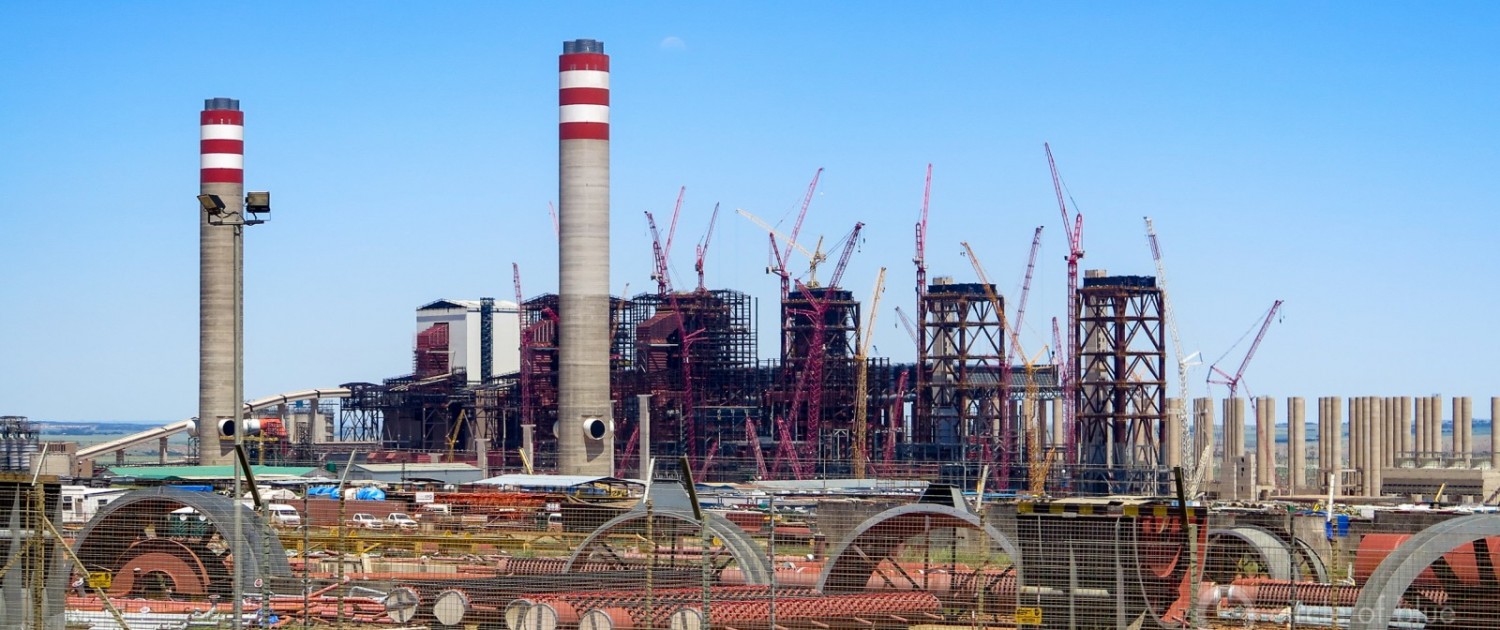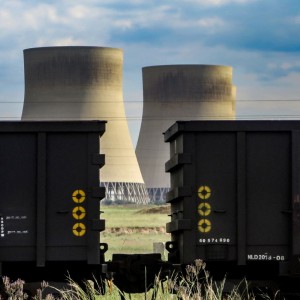
The 4,800-megawatt Kusili coal-fired generating station east of Johannesburg, years overdue and billions of dollars over budget, is at the center of the damaging economic, social, and ecological vortex engulfing South Africa. Photo © Keith Schneider / Circle of Blue.
By Keith Schneider
Circle of Blue
Nearly two decades after the Kusile and Medupi power stations were initially proposed, both plants, and their builder, are crashing into the project-debilitating limits of the resource-scarce, ecologically unstable, and nervous financial markets of the 21st century. Said another way, the 20th-century narrative of economic progress, expressed by gargantuan industrial projects and centralized management practices, is breaking apart under intense ecological pressure.
Taking its place are two new stories. The first documents the advent of new energy generating technologies – solar, wind, and small hydropower plants – that are less expensive, consume smaller amounts of critical resources, especially water, and take a year or two instead of a decade to build.
From 2010 to 2015, South Africa brought 1,900 megawatts of renewable energy online – most of it wind and solar generated – at a cost of around $US 1.5 million per megawatt.
Wind and solar generating stations, according to the South Africa Department of Energy, now add roughly 1,000 megawatts of new generating capacity annually to the national grid, take up less space and cause much less damage to the land than coal mines, and use scant amounts of water. The new plants also take 15 months to two years to complete, says a Department of Energy report made public late last year, and produce power at about half the current estimate of the cost of electricity that will be generated by Medupi and Kusile.
The second and more disturbing story describes the pernicious stubbornness of global financiers and industrial developers who persist in building immense energy and mining projects that cause severe environmental dissolution and financial distress. Building mega energy projects, never easy, is more difficult now in South Africa and around the world because evidence of permanent harm to the environment and communities also is activating a swarm of civic rebellions to halt construction.
“Medupi and Kusile are examples of large-scale mega infrastructure projects that countries see as the basis of a development model that started after World War II,” said Janet Redman, director of the Climate Program at the Institute for Policy Studies in Washington, D.C., and an authority on World Bank loan programs. “Projects this large are seen as transformational. They cost a lot. They employ a lot of people. Their effects are meant to be big. But it’s a model that doesn’t make much sense now.
“Large projects, like Medupi and Kusile, are so vulnerable to delay, to land disputes, to disputes over water supply, to changes in markets, and to big cost overruns. Yet big institutions continue to support them.”
Circle of Blue’s senior editor and chief correspondent based in Traverse City, Michigan. He has reported on the contest for energy, food, and water in the era of climate change from six continents. Contact
Keith Schneider




